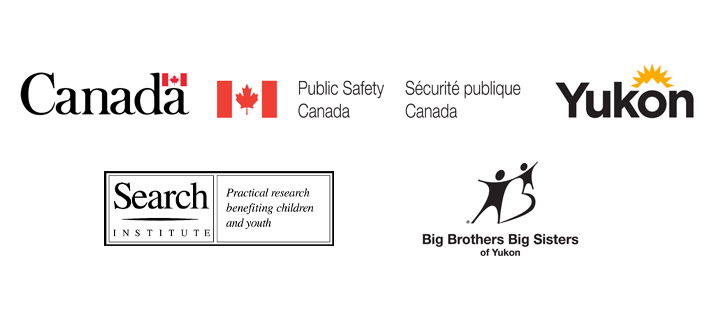
Learn about the Developmental Asset Model
Youth are healthy, successful and reach their full potential when they have “developmental assets”.
Learn about the Developmental Assets
The Search Institute has found 40 factors that are important to young people’s success. They call these “Developmental Assets” which are traits, values and experiences that all young people need to be healthy, successful and reach their full potential.
The more assets young people have, the more likely they are to:
- thrive;
- make healthy choices; and
- avoid harmful behaviours.
When a young person increases the number of assets they have, research shows they become happier and more resilient. Regardless of:
- gender;
- culture;
- how much money they have; or
- where they live.
The 40 Developmental Asset Model is not a program, but a mind-set. Increasing the number of assets in youth will improve the lives of young people by enhancing their health, education, as well as their physical and mental well-being. The goal is to create a sustainable culture that fosters the use of the asset based model.
Part 1: Learn about the 40 Developmental Assets
Part 2: The story of David
Part 3: Developmental relationships
What are the 40 Developmental Assets?
*The definitions of these assets were adapted by the Youth Directorate with permission of Search Institute
External assets
The supports, opportunities, and relationships young people need across all aspects of their lives.
Support
- Family support – family life provides high levels of love and support.
- Positive family communication – young person and their parent(s) communicate positively, and young person is willing to seek advice and counsel from parents.
- Other adult relationships – young person receives support from 3 or more non-parent adults.
- Caring neighbourhood – young person experiences caring neighbours.
- Caring school climate* – school provides a caring, encouraging environment that respects the community’s culture.
- Parent involvement in schooling* – parent(s) and community members are actively involved in helping the young person succeed in school.
Empowerment
- Community values youth – young person perceives that adults in the community value youth.
- Youth as resources – young people are given useful roles in the community.
- Service to others – young person serves in the community 1 hour or more per week.
- Safety – young person feels safe at home, school, and in the neighbourhood.
Boundaries and expectations
- Family boundaries* – family has clear rules, roles, and consequences, and monitor’s the youth’s whereabouts.
- School boundaries – school provides clear rules and consequences.
- Neighbourhood boundaries* – community shares the responsibility for the safety and well-being of the youth.
- Adult role models – parent(s) and other adults model positive, responsible behaviour.
- Positive peer influence – young person’s best friends model responsible behaviour.
- High expectations* – parents, community members, and teachers encourage youth to do well.
Constructive use of time
- Creative activities – young person spends 3 or more hours per week in lessons or practice in music, theatre, or other arts.
- Youth programs* – young person spends 3 or more hours per week in nature, sports, clubs, or other organizations at school, on the land, or in the community.
- Spiritual/Religious community* – young person spends 1 or more hours per week in activities of a spiritual or religious nature.
- Time at home* – young person chooses to spend quality time at home.
Internal assets
The personal skills, commitments, and values they need to make good choices, take responsibility for their own lives, and be independent and fulfilled.
Commitment to learning
- Achievement motivation – young person is motivated to do well in school.
- School engagement – young person is actively engaged in learning.
- Homework – young person reports doing at least 1 hour of homework every school day.
- Bonding to school – young person cares about their school.
- Reading for pleasure – young person reads for pleasure 3 or more hours per week.
Positive values
- Caring – young person places high value on helping people.
- Equality and social justice* – young person respects self and others; places high value on sharing and co-operation.
- Integrity* – young person stands firm and acts on their beliefs, as well as respects other’s beliefs.
- Honesty – young person “tells the truth even when it is not easy”.
- Responsibility – young person accepts and takes personal responsibility.
- Restraint* – young person believes in making healthy, informed life choices.
Social competencies
- Planning and decision making – young person knows how to plan ahead and make choices.
- Interpersonal competence – young person has empathy, sensitivity, and friendship skills.
- Cultural competence* – young person has knowledge of own and other cultures, and feels comfortable with people from different backgrounds.
- Resistance skills – young person can resist negative peer pressure and dangerous situations.
- Peaceful conflict resolution – young person seeks to resolve conflict nonviolently.
Positive identity
- Personal power – young person feels they have control over "things that happen to me".
- Self-esteem – young person feels a connection to family and culture and has knowledge and pride of customs and traditional ways.
- Sense of purpose – young person reports that "my life has purpose".
- Positive view of personal future – young person is optimistic about their future.

Contact information
For questions about the Developmental Asset Model contact Gord Kurzynski, Youth Directorate Manager, by email at gord.kurzynski@gov.yk.ca or phone 867-667-8213.
